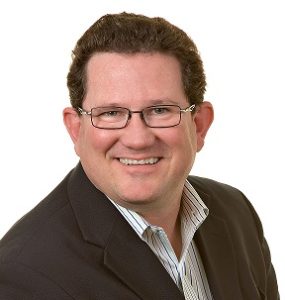 A Challenge for Direct Secure Messaging (DSM)
A Challenge for Direct Secure Messaging (DSM)
By Andy Nieto, Health IT Strategist at DataMotion
Twitter: @DataMotion
Have you ever lost your cell phone and tried to re-create your phonebook? Forget sending an email to a friend whose email address you have forgotten. You can’t just look up the address in a directory. It doesn’t exist. We face the same challenge with Direct Secure Messaging (DSM).
Directories were available when one phone number was sufficient for an entire family. Today, however, it is common for every member of the family to have his or her own phone number. Email is similar. You often have one address for personal use, one for shopping, and another for finances. And that doesn’t include fax numbers. This is another challenge for DSM.
So why are there no directories?
Ten years ago, telephone companies offered White and Yellow page directories for lookup of wired or location based phones. This was achievable because one or two phone companies generally served a geographic location. Directories for cell phones never came to being because of the large number of providers involved and the lack of “portability” of phones early on. A lack of portability meant people got a new phone number every time they changed phone carriers, so this would have made any paper directory inaccurate very quickly. So how many Health Information Service Providers (HISPs) are there?
DSM is a secure email-like method of sharing clinical information. It is a required component for 2014 ONC certification for an electronic health record (EHR) and is provided to clinicians via HISPs. Usage of DSM is growing, as is the number of DSM addresses – yet another set of addresses to manage with no common directory.
Challenges of creating a DSM directory
DSM is smack in the middle of one the most radical, transformative and accelerated changes any industry has ever seen. Buzz words of interoperability and data exchange have been used throughout this healthcare renaissance. With an ever-increasing demand for clinical interaction with relevant data, it is understandable that users want a directory to find their associated clinician.
So what are some of the challenges? Creating a directory of this information has four major barriers:
Divergent Leadership Paths of Two Influential Organizations
There are two major organizations influencing DSM in the United States: the National Association for Trusted Exchange (NATE) and DirectTrust. These organizations overlap on DSM and have differing opinions on HISP certification and directories. DirectTrust uses accreditation to manage HISPs and has a “workgroup” focused on creating a directory. In May 2014, DirectTrust had accredited 14 HISPs with certification, placed 16 others in candidate status and had a membership list of 125 companies. NATE is a voluntary membership organization based upon a state organization’s signature of NATE’s Memorandum of Understanding (MOU). NATE has 11 states which have signed MOU. NATE and DirectTrust have separate work groups – with each focused on developing a directory standard.
Variations in Directory Components Collected
Within any given geography a clinician can get DSM services from a broad range of HISP providers. There are accredited and non-accredited HISPs. There are members of DirectTrust, NATE or both. At the 2014 HIMSS event, a straw poll found that more than 30 separate organizations were offering Direct services. Unfortunately, the directory components that each of these HISPs collect vary from just the user’s name to a complete physician profile. There is no current standard for what is collected. If a universal directory is ever created, this information must be standardized across HISPs.
Multiplicity of DSM Addresses per Person
All clinicians will likely have at least three DSM addresses, and some will have many more. Clinicians will have a DSM address in their primary EHR. They will likely have a DSM address in the hospitals where they have privileges. There will be addresses associated with their HIEs and HINs. It is also possible that they will have DSM addresses associated with professional or community associations. A key question with all of these addresses in play is which is the address to publish in a directory? Again, there’s a strong need for a standard.
Lack of National Standards
A number of national standards for a directory have been presented and promoted. HPD+ (Health Provider Directory Plus) has had the most traction but also has some limitations. NATE and DirectTrust have active work groups on this topic. Many want the directory searchable by specialty, geography, and other topics. Others see the directory as just White Pages with listings by name. There is also a push to have providers self-report their DSM address as part of their NPI listing as a national directory. With so many different expectations, there’s an unquestionable need to have a national standard.
The incredible speed at which the healthcare industry is evolving means that a lot of moving parts are in play. The large number of participants, leaders, features and addresses for DSM make assembling a directory a massive challenge. Yet, ultimately, to fulfill the promise of better care for patients, a standard DSM directory is a necessity.
About the Author: Andrew (Andy) Nieto is an IT Strategist at DataMotion where he promotes and expands knowledge of secure communications and the Direct Project across all industries. He worked as a Community Strategist with Allscripts. He co-founded eMed Consulting Group LLC, and held positions at Centric Health Finance, Astracon, and Express Scripts. During his tenure at eMed, Mr. Nieto completed his certification as a CHISP (Certified Health Information Systems Professional).
